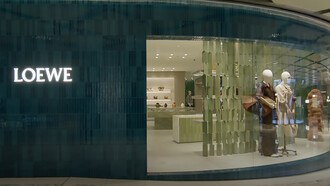The Yıldız Porcelain Factory, established by Sultan Abdulhamid II in the late 19th century, became a symbol of the Ottoman Empire's cultural sophistication and diplomatic prowess. Renowned for its high-quality ceramics and porcelain, the factory’s pieces adorned imperial palaces, mansions, and gardens, but they also served a far more strategic role. These finely crafted porcelain objects were not merely decorative items; they were carefully designed diplomatic tools, communicating the Empire’s wealth, status, and modernity. Through these porcelain products, the Ottoman Empire showcased its ability to blend tradition with innovation, while also engaging in cultural exchanges with Europe.
The porcelain produced at Yıldız was also integral to the daily life of the Ottoman court, where it was used in royal banquets, ceremonial occasions, and social gatherings. Porcelain dinnerware, coffee sets, and other items enhanced the opulence of these events, symbolizing the Sultan’s wealth and the cultural importance of diplomacy and hospitality. Technological innovations at the Yıldız factory, such as the use of fine kaolin porcelain and high-temperature kilns, added to the value of these porcelain gifts. After the factory’s rebuilding in 1894 by Italian architect Raimondo D'Aronco, these advanced techniques allowed for the production of porcelain that was not only delicate and beautiful but also durable, making it even more valuable as a diplomatic gift.
Even after Sultan Abdulhamid II’s deposition in 1909, the legacy of Yıldız porcelain continued to influence modern Turkish porcelain production. Many of the original pieces are now housed in museums around the world, including the Topkapi Palace Museum in Istanbul, the Museum of Turkish and Islamic Arts, and the Yıldız Palace Museum itself, where visitors can admire the intricacy of these historical objects. Some of these remarkable porcelain items are also on display at The British Museum in London, The Louvre Museum in Paris, and The Museum of Decorative Arts in Prague, which houses significant pieces from the Ottoman Empire.
One of the most remarkable features of Yıldız porcelain was its fusion of traditional Ottoman artistry with European design influences. The porcelain items produced at the factory often featured intricate floral motifs, geometric patterns, and arabesques—hallmarks of Ottoman craftsmanship—combined with Rococo, Neoclassical, and Baroque elements from Europe. This merging of Eastern motifs with Western techniques symbolized the Ottoman Empire’s ability to adapt to modern influences while retaining its cultural and Islamic heritage. It not only made the porcelain appealing to both Ottoman and European sensibilities but also positioned the Empire as a cultural and diplomatic player on the world stage.
The range of porcelain items produced at Yıldız was diverse, including large decorative vases, exquisite dinnerware, coffee and tea sets, writing sets, and wall plates. Each piece was meticulously crafted with attention to detail, often using high-quality kaolin porcelain, gold leaf, and cobalt blue accents. These items were not only luxurious but also served as diplomatic gifts, strategically presented to foreign dignitaries, royal families, and heads of state. These gifts were designed to reflect the recipient’s culture, thereby fostering a sense of cultural exchange and reinforcing the ties between the Ottoman Empire and its international partners.
The role of porcelain as a diplomatic tool was further emphasized by the careful markings on each piece, often featuring the crescent and star emblem of the Ottoman Empire and the year of manufacture. These markings not only ensured the authenticity of the gifts but also reinforced the legitimacy of the Ottoman Empire's place in global diplomatic circles.
A specific example of a Yıldız porcelain product used as a diplomatic tool was the porcelain dinnerware set presented by Sultan Abdulhamid II to French Emperor Napoleon III during a state visit. The dinnerware set, crafted at the Yıldız Porcelain Factory, was designed with intricate floral patterns, delicate gold accents, and vibrant cobalt blue and deep red hues—characteristic of the Yıldız style.
The set incorporated Ottoman motifs, such as floral arabesques, combined with European Rococo and Neoclassical influences, representing a fusion of Eastern and Western cultures. Another notable example of Yıldız porcelain as a diplomatic gift was a porcelain tea set, again crafted with floral motifs, geometric patterns, and gold gilding, presented to Queen Victoria of the United Kingdom. Additionally, a Yıldız porcelain vase was gifted to German Kaiser Wilhelm II in the early 20th century, reflecting the Ottoman Empire’s desire to strengthen its ties with Germany.
The vase, featuring intricate arabesque patterns and gold-leaf detailing, symbolized the Empire’s appreciation for German diplomatic support, especially in areas like military modernization and infrastructure development. The porcelain gifts exchanged between the Ottoman Empire and these European powers were not just luxury items; they were symbols of strategic alliances, political strength, and cultural diplomacy. These gifts emphasized Sultan Abdulhamid II’s vision of modernization while preserving Ottoman heritage.
Today, the Yıldız Porcelain Factory remains operational, producing exclusive hand crafted replicas of original designs. These pieces allow modern collectors and art enthusiasts to appreciate the craftsmanship of the Ottoman period, ensuring the legacy of Yıldız porcelain endures. Additionally, the factory continues to produce items inspired by traditional motifs, such as wall plates, vases, and coffee sets, which are available for purchase at the factory store and Milli Saraylar (national palaces) stores, connecting past artistry with contemporary tastes.
In conclusion, Yıldız porcelain exemplifies how art and craftsmanship can transcend aesthetics to become powerful diplomatic tools. It was not only a symbol of luxury but also an emblem of the Ottoman Empire’s cultural identity, political strategy, and global diplomacy. Through these exquisite pieces, the Empire communicated its status and sophistication, using art as a bridge to foster international relations. The enduring legacy of Yıldız porcelain highlights the intersection of art, culture, and politics, showing how artistic production strengthens diplomatic ties.















